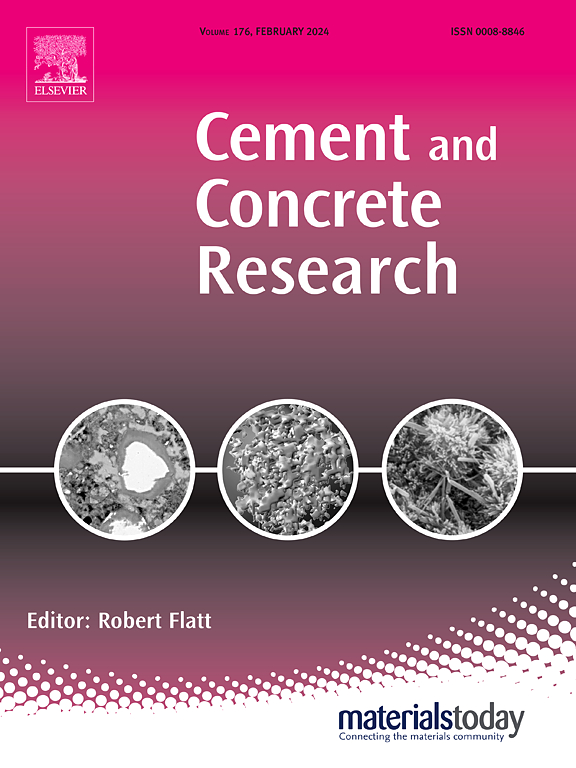利用深度学习定量GGBS水化——与SEM-EDS图谱、PONKCS XRD和等温量热法的比较
IF 13.1
1区 工程技术
Q1 CONSTRUCTION & BUILDING TECHNOLOGY
引用次数: 0
摘要
由于磨碎的高炉矿渣的无定形性质,其水化程度的量化一直是水泥浆体中水化程度的一个难题。在这项研究中,卷积神经网络(cnn)在超过37,000对图像上进行训练,以自动从背散射电子(BSE)图像中分割GGBS粒子并估计其DoH。比较了三种常规方法:EDS测图、PONKCS XRD和等温量热法。在最少的人为干预下,经过训练的模型可以在不同的反应时间、图像质量、水泥类型、替代率和GGBS来源中一致地估计GGBS DoH。EDS制图虽然可以进行适当的归一化,但耗时且对原始GGBS和水化产物的元素分布敏感。PONKCS XRD能够定量非晶GGBS,与图像分析很好地吻合。如果校准,等温量热法也可以跟踪GGBS DoH,但不太适合长期反应(DoH >;50%),这是由于信号微弱和设备需求广泛。本文章由计算机程序翻译,如有差异,请以英文原文为准。
Quantification of GGBS hydration using deep learning - A comparison with SEM-EDS mapping, PONKCS XRD and isothermal calorimetry methods
Quantifying degree of hydration (DoH) of ground granulated blast-furnace slag in blended cement paste has long been a challenge due to its amorphous nature. In this study, Convolutional Neural Networks (CNNs) were trained on over 37,000 image pairs to automatically segment GGBS particle from backscattered electron (BSE) images and estimate its DoH. The results were compared with three conventional methods: EDS mapping, PONKCS XRD, and isothermal calorimetry. With minimal human involvement, the trained models consistently estimated GGBS DoH across varying reaction times, image qualities, cement types, substitution rates, and GGBS sources. EDS mapping, though capable with appropriate normalization, was time-consuming and sensitive to element distribution of raw GGBS and hydration products. PONKCS XRD enabled quantification of amorphous GGBS, aligning well with image analysis. Isothermal calorimetry can also track GGBS DoH if calibrated, but is less suitable for long-term reaction (DoH > 50 %) due to weak signals and extensive equipment demand.
求助全文
通过发布文献求助,成功后即可免费获取论文全文。
去求助
来源期刊

Cement and Concrete Research
工程技术-材料科学:综合
CiteScore
20.90
自引率
12.30%
发文量
318
审稿时长
53 days
期刊介绍:
Cement and Concrete Research is dedicated to publishing top-notch research on the materials science and engineering of cement, cement composites, mortars, concrete, and related materials incorporating cement or other mineral binders. The journal prioritizes reporting significant findings in research on the properties and performance of cementitious materials. It also covers novel experimental techniques, the latest analytical and modeling methods, examination and diagnosis of actual cement and concrete structures, and the exploration of potential improvements in materials.
 求助内容:
求助内容: 应助结果提醒方式:
应助结果提醒方式:


